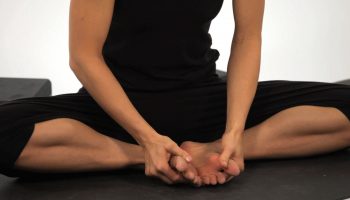Low blood pressure or hypotension is a physical condition, where the blood pressure levels fall below 90/60 mm Hg. Doctors believe that low blood pressure is not really harmful, until it starts causing dizziness, fainting and even shock. Some other symptoms of hypotension include headache, chest pain, seizures, prolonged diarrhoea and vomiting.
Low blood pressure can be caused due to various reasons such as low blood volume, anaemia, nutritional deficiency, heart problems, and hormonal changes, amongst others. In advanced cases, it may lead to lack of oxygen supply and nutrients to the brain, and other vital organs.
Although hypotension is not as dangerous as high blood pressure (hypertension), practising certain precautions, and making some lifestyle alterations, can help you stay out of danger. Proper care and medication can bring your blood pressure level back to normal. Regular practice of physical exercises, like yoga , can improve blood flow in the body, and thus, alleviate low blood pressure. Additionally, a balanced ayurvedic diet can ease and speed up the process of normalising the blood pressure level.
Yoga improves circulation, so it can be very beneficial for people with low blood pressure. There are some things to keep in mind when guiding students with low blood pressure.
Keep transitions slow and gentle when leading students who have low blood pressure. You might want to add in some cues as well to encourage them to make the transitions (for example from forward fold to mountain) even slower. Talk about how to modify for low blood pressure.
Contents
Matsyasana or fish pose
Low blood pressure can be a symptom of an underlying problem such as dehydration that can lead to other severe conditions such as heart failure. It is, therefore, important that you practice yoga postures such as matsyasana to improve your overall health.
Padma sarvangasana or lotus shoulder stand
Twisting in padma sarvangasana can improve the flow of blood to the brain and also stimulate the pituitary and thyroid glands. The result is a refreshed body and an energised mind.
Ustrasana or camel pose
Practising backbends such as ustrasana will increase the flow of blood to your brain along with calming your nervous system and toning your spine.
Uttanasana or intense forward-bending pose
Forward bending postures such as uttanasana can improve blood flow to the brain, thyroid and pituitary glands, controlling blood pressure levels.
Adjustments for the practice
- Slow transitions between poses, especially from the position where the head-level is lower than the heard-level; from bending down, sitting, lying down to standing position;
- Slow reposition of the head;
- Take additional breaths between transactions;
- Slower yoga styles (e.g. hatha instead of Vinyasa style flows) may be more suitable for people with hypotension.





